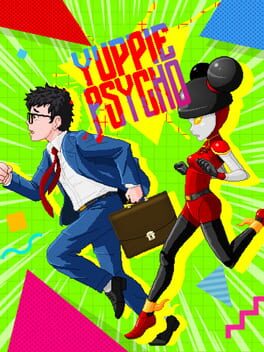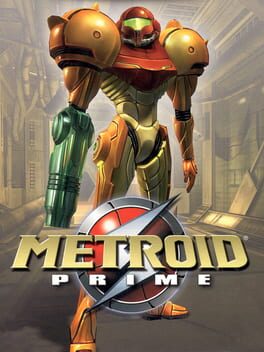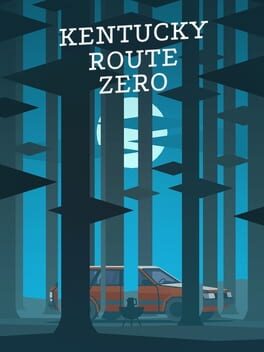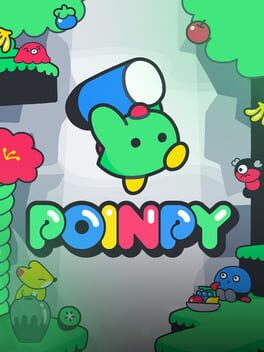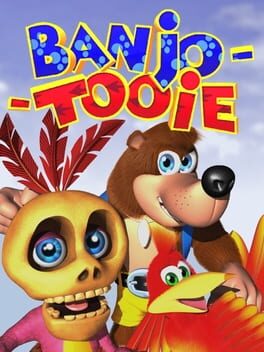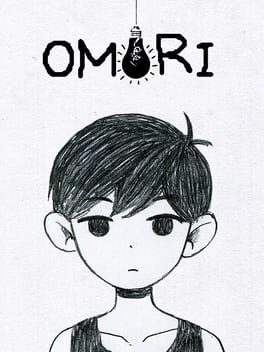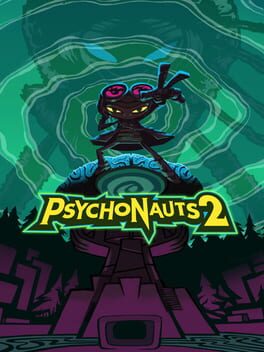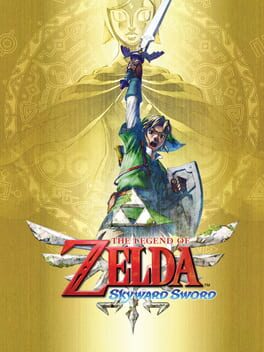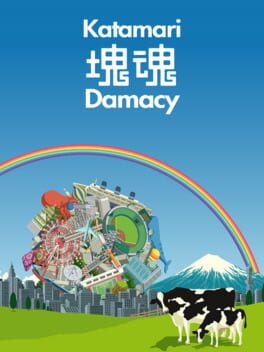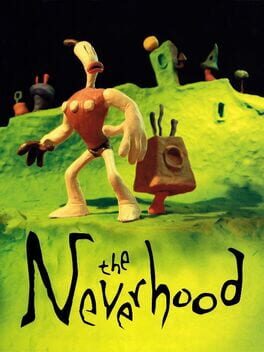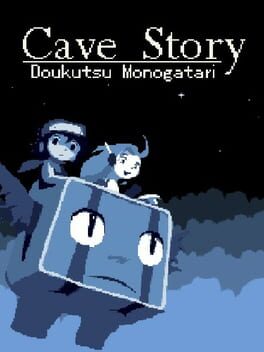chump
2019
In a day and age where every turn-based game with comedic elements of some kind is labeled as "inspired by Earthbound," it's ironic that one of the few indie games to actually give me Earthbound vibes isn't even an RPG at all. The Mother series's reframing of JRPG tropes through contemporary American towns is succeeded in Yuppie Psycho with survival horror and a gigantic, labyrinthine office building- you save your game by making a photocopy of your face, brew coffee for health instead of combining herbs, and scavenge for these limited supplies by searching through desks and filing cabinets. The survival horror elements, though, aren't exactly a highlight, as it's often more funny than unnerving, and it focuses on experimentation and pure exploration rather than making getting from point A to point B as draining as possible. I'd instead summarize it as a game where the fun comes from accessing new areas and seeing weird things happen all around you. Most of it is downright dumb, a lot of it is cool, but all of it is entertaining. Where else can you trade slices of cheese for printer paper with the creepy guy upstairs, talk to your sexy coworker who literally can't speak in anything besides innuendo, or realize that your guiding partner character has completely bailed on you after an hour? But again, like Earthbound, Yuppie Psycho acknowledges that the humor should stem less from wackiness and more from how people react to said wackiness. The game's story revolves around tracking down an actual, literal, broom-riding, cauldron-stirring witch who's supposedly corrupting the corporation you were hired by from the inside, but the crushing stupidity of this premise is downplayed by the player character, who is instead more concerned about concealing the fact that he's a witch hunter from the people he works with. The end result is a genuinely refreshing experience compared to the current landscape of indie game writing, which is paired with a surprisingly deep pool of secrets and optional content that never diminishes in quality from the rest of the game's sense of pure creativity. Unfortunately, however, by the end of the game it becomes clear that this stuff is there to set up the good endings, which require doing really specific actions at specific points, a design pattern that's, as a general rule, not my cup of coffee. But this inclusion doesn't revoke Yuppie Psycho's status in my mind as a bona fide hidden gem.
2002
Easily my favorite Metroid game, and that might have something to do with the fact that it hardly even is one. Advanced movement tech, sequence breaks, and everything else that, from what I've gathered, makes Super an all-timer according to its fans is notably absent, and that's not even mentioning the fact that you barely have to consider the entire map at large until the very end of the game. Probably a contentious take, especially on this site, but I've always preferred when this series leans into its experiential side rather than its mechanical side, an ideal that Prime relentlessly pursues at the expense of any interesting combat or, frankly, complex exploration. Instead, it's phazon-focused on translating one of Metroid's most essential angles into the third dimension: the sense of Samus's physical presence in the worlds she explores. Here, that's not only the responsibility of rigid controls and weighty jumps, but of the player's very perspective. It's no surprise that so much of this game boils down to how you see things- scanning and X-rays and thermal vision- stuff that really could only be done in an FPS. Prime's about being a first-person game just as much as it's about being a three-dimensional game, and Retro truly went above and beyond the call of duty in terms of reinforcing this theme. Electronic interference scrambling your view, water taking a moment to drip off of your visor after being submerged, and even Samus's half-translucent reflection appearing in certain lighting are just a few of the immersive details that the team managed to cram in here. To me, this is the closest a video game has come to conveying a sense of touch, but the mystique doesn't stop with the visuals. The utterly bone-chilling main menu theme sets the stage for what I believe to be not just an atmospheric experience, but the atmospheric experience, the benchmark that all future atmospheres must be compared to. No game transports me somewhere new to the degree that Metroid Prime does, and the sound contributes a sizeable chunk of the heavy lifting. Phendrana Drifts, for all intents and purposes, is a generic snow level, but it doesn't feel like one. Something about the almost ominously gentle piano as Samus first steps foot into the cold and its evolution into an outright suffocating electronic track as she reaches the area's depths just represents a fundamentally remarkable grasp on how to make foreign environments exciting to explore. The variance in terrain doesn't hurt, either, in terms of keeping traversal skills sharp and sparking area memorability, and even the in-game map makes itself useful. In a series (and genre) where it can occasionally feel like the map is playing the game for you, deciphering Prime's 3D map practically feels like its own little ability that must be learned, another mark on the long list of the game's successes. I was recently underwhelmed by its sequel, but, in hindsight, I almost don't blame it for mostly treading the same ground- the first game really accomplished everything it set out to do.
2013
Interactive fiction: it's probably the most misleading title of a video game genre, since there's hardly anything at all interactive about selecting between a handful of pre-written story tracks. In most cases, you can't experience a piece of interactive fiction differently than how you can experience a piece of traditional fiction, which is a disconnect that Kentucky Route Zero does its best to fix. For its entire runtime, the game is written in a way that's difficult to not at least respect. It doesn't attempt any cheap narrative gimmicks, it doesn't become explicitly meta at any point, and, most importantly, it never gives the player the impression that any decision made will alter the story's sequence of events. A lesser piece of interactive fiction would question whether or not decisions without at least the illusion of consequence are worth including, but Kentucky Route Zero has a polar opposite philosophy.
It's no coincidence that the game seems to have a fixation on museums, because in many ways, it is one. The museum itself is only there to house the exhibits and point you towards them- what you actually get out of the exhibits is entirely up to you. Kentucky Route Zero is a collection of experiences in the same way that a museum is a collection of exhibits, and, using this line of thinking, it's clear why it was divided into an act/scene structure. It also expands this stage play notation to the dialogue, where most of the choices have the player picking lines for characters to say. This is where the game's genius lies. If the majority of other interactive fiction games can be called "reading simulators" then Kentucky Route Zero is surely a "writing simulator." You can have characters explain their backstories or display their personalities in various different ways, and the only real motivation for what choice to make is what the most appropriate next line for the story would be. Just like looking at an exhibit in a museum, it's totally up to the player how exactly each story beat is experienced, and I think a lot of people will find themselves unable to rationalize why they made certain decisions, like withholding what could've been important information to have a character comment on something trivial. Clearly, one of the game's major goals was to make the audience as much of a participant as the author, and that's where it's most successful.
I found it fascinating from a logistical standpoint for its entire duration, but in terms of its actual contents, I only really felt hooked through Act I. I get that the events are supposed to be disjointed, I get that abstraction's the point here, and maybe the game's ultimately just not for me, but I really would've liked at least some concrete plot through-lines. The mystery of the Zero itself could've served this purpose, and maybe the game could've held off on the player actual visiting it until later on in the story, but perhaps I'm just being nearsighted. It's a museum, and that's an artistic choice that I greatly admire, but maybe it's a little too content in just being a museum. Overall, it's a deeply pretentious game, in a good way. It's confident that it's an important work, one that'll resonate with its audience enough to be remembered long after its contemporaries. And I hope it's right.
It's no coincidence that the game seems to have a fixation on museums, because in many ways, it is one. The museum itself is only there to house the exhibits and point you towards them- what you actually get out of the exhibits is entirely up to you. Kentucky Route Zero is a collection of experiences in the same way that a museum is a collection of exhibits, and, using this line of thinking, it's clear why it was divided into an act/scene structure. It also expands this stage play notation to the dialogue, where most of the choices have the player picking lines for characters to say. This is where the game's genius lies. If the majority of other interactive fiction games can be called "reading simulators" then Kentucky Route Zero is surely a "writing simulator." You can have characters explain their backstories or display their personalities in various different ways, and the only real motivation for what choice to make is what the most appropriate next line for the story would be. Just like looking at an exhibit in a museum, it's totally up to the player how exactly each story beat is experienced, and I think a lot of people will find themselves unable to rationalize why they made certain decisions, like withholding what could've been important information to have a character comment on something trivial. Clearly, one of the game's major goals was to make the audience as much of a participant as the author, and that's where it's most successful.
I found it fascinating from a logistical standpoint for its entire duration, but in terms of its actual contents, I only really felt hooked through Act I. I get that the events are supposed to be disjointed, I get that abstraction's the point here, and maybe the game's ultimately just not for me, but I really would've liked at least some concrete plot through-lines. The mystery of the Zero itself could've served this purpose, and maybe the game could've held off on the player actual visiting it until later on in the story, but perhaps I'm just being nearsighted. It's a museum, and that's an artistic choice that I greatly admire, but maybe it's a little too content in just being a museum. Overall, it's a deeply pretentious game, in a good way. It's confident that it's an important work, one that'll resonate with its audience enough to be remembered long after its contemporaries. And I hope it's right.
2018
Shoot someone and they die. But you have limited ammo. But you can pick up other people's arrows if they miss. But if you hit someone and they dodge through it, they get the arrow instead. But...
Singleplayer games are often judged on how well they're able to accomplish something like the above: taking a simple base concept and constantly twisting it to throw players off guard while still keeping the same mechanical core intact. Multiplayer games, though, are an entirely different beast- learning how to play one is almost always getting the rules explained to you, whether it be through a heavy handed tutorial or just from one of your friends. The reasoning for this is apparent, as intuitive teaching isn't really possible without some kind of linear progression, and when you can't predict the "difficulty" (skill level) of your "obstacles" (other players), there's really nothing you can do. That is, unless you're playing with a group of people who also have no prior experience with the game, which was exactly my situation with Towerfall, and it was a blast! Slowly picking up on all of the little quirks in the platforming mechanics and immediately experimenting with them in the next round, laughing or gloating during the instant replay after a crazy finish, and that one moment, at match point, where the last two survivors are using all of the tricks they've learned to to try and outwit each other. Fittingly, it's reminiscent of discovering what Jigglypuff's down-B did or that Luigi's taunt could deal damage back in the day, on a much more limited scale. There's not really any worthwhile singleplayer content, but that only speaks to how lean it is- each and every part of Towerfall is both intuitive and highly conducive towards the controlled chaos that makes for a great party game. Considering you can disable anything you might find to be BS, like the auto-handicap that happens when someone lags too far behind in score, there's a temptation to call this game perfect... but I'm able to resist it. My crusade against loading screen tips continues to grow, as too much stuff is revealed to you via popups in between rounds, and it does feel like it's missing a lot in terms of personality, which makes you realize how much heavy lifting Celeste's soundtrack would end up doing. All the stages' individual mechanics are well designed, and rotating between several layouts rather than sticking with a static one is particularly clever, but a lot of them don't really fit the theming of each individual level and so it's kind of hard to remember which one contains which gimmicks. But can you call them flaws if they don't dent your enjoyment? Loaded my Switch up with party games for a meetup with college friends and we had so much fun with this one that we didn't get to any of the others, which just about says it all. With the Smash Bros. series treading water and only feeling more and more bloated since Melee, this just might be the new go-to.
Singleplayer games are often judged on how well they're able to accomplish something like the above: taking a simple base concept and constantly twisting it to throw players off guard while still keeping the same mechanical core intact. Multiplayer games, though, are an entirely different beast- learning how to play one is almost always getting the rules explained to you, whether it be through a heavy handed tutorial or just from one of your friends. The reasoning for this is apparent, as intuitive teaching isn't really possible without some kind of linear progression, and when you can't predict the "difficulty" (skill level) of your "obstacles" (other players), there's really nothing you can do. That is, unless you're playing with a group of people who also have no prior experience with the game, which was exactly my situation with Towerfall, and it was a blast! Slowly picking up on all of the little quirks in the platforming mechanics and immediately experimenting with them in the next round, laughing or gloating during the instant replay after a crazy finish, and that one moment, at match point, where the last two survivors are using all of the tricks they've learned to to try and outwit each other. Fittingly, it's reminiscent of discovering what Jigglypuff's down-B did or that Luigi's taunt could deal damage back in the day, on a much more limited scale. There's not really any worthwhile singleplayer content, but that only speaks to how lean it is- each and every part of Towerfall is both intuitive and highly conducive towards the controlled chaos that makes for a great party game. Considering you can disable anything you might find to be BS, like the auto-handicap that happens when someone lags too far behind in score, there's a temptation to call this game perfect... but I'm able to resist it. My crusade against loading screen tips continues to grow, as too much stuff is revealed to you via popups in between rounds, and it does feel like it's missing a lot in terms of personality, which makes you realize how much heavy lifting Celeste's soundtrack would end up doing. All the stages' individual mechanics are well designed, and rotating between several layouts rather than sticking with a static one is particularly clever, but a lot of them don't really fit the theming of each individual level and so it's kind of hard to remember which one contains which gimmicks. But can you call them flaws if they don't dent your enjoyment? Loaded my Switch up with party games for a meetup with college friends and we had so much fun with this one that we didn't get to any of the others, which just about says it all. With the Smash Bros. series treading water and only feeling more and more bloated since Melee, this just might be the new go-to.
2022
Clearly not content with Downwell, a game that quite literally turned the infinite climber on its head simply by requesting that the player harness gravity instead of fight against it, designer Ojiro "Moppin" Fumoto continues to both expand the scope of the genre and carve his own niche. Poinpy's innovation is less immediately apparent, though- you're managing your jumps, avoiding enemies, and collecting fruits to progress- hardly anything groundbreaking, at least at a surface level. But try and handle Poinpy in the frantic, twitchy reaction-dependent manner that these types of games usually promote and you won't end up getting very far. Instead, it's really a game of planning, spacing, and timing, or, in short, high-speed golf. Getting the most out of each of your jump orbs means creatively figuring out how many onscreen entities you can target with a single swipe, even if you're not moving strictly upwards in the process. Moppin's got a good head on head on his shoulders, and pretty much every nuance here works in Poinpy's favor. The timer not ending until you finish a recipe, for instance, means you're more encouraged to tee up that one perfect shot rather than complete just a decent one quickly. Though, my enthusiasm towards this one started waning when it begun truly feeling like the mobile game that it is. Meta-progress was something that Downwell explicitly avoided, so it's disappointing to see it featured prominently here, especially considering the game eventually feels almost unplayable without certain unlocks. Likewise, Poinpy's most satisfying moments, which almost entirely consist of grabbing the last fruit you needed by the skin of your teeth right before landing, aren't enough to counteract the identical feeling of every run. I do well every once in a while but I can't point out why, instead it feels like I'm just repeating the same things I always do. Moppin's enthusiasm towards the genre is certainly inspiring, but he's far more optimistic than I, and, for me, this one lands in the same pile that all the others do. Fun in short bursts, but not much further.
Sidenote that tacking high quality mobile games onto services that I already pay for is something that I'd love to see more of. I don't know if I'll ever fork over money for an iPhone game, but I think the platform has untapped potential, so it'd be great to see devs who take it seriously get funding instead of having to resort to, y'know, the works. Surprised Netflix jumped in before something like Gamepass.
Sidenote that tacking high quality mobile games onto services that I already pay for is something that I'd love to see more of. I don't know if I'll ever fork over money for an iPhone game, but I think the platform has untapped potential, so it'd be great to see devs who take it seriously get funding instead of having to resort to, y'know, the works. Surprised Netflix jumped in before something like Gamepass.
2016
More than any other genre, the puzzle game lives and dies by its tutorial. No one wants to spend too much time on problems that you're supposed to solve without much trouble. Likewise, finally realizing that a particular solution revolves around a mechanic that you weren't entirely familiar with might be the worst feeling a puzzle can produce. Traditionally, every second without full mechanical knowledge is a wasted one, but Shenzhen seems like a rejection of this concept. Instead of a typical tutorial, you're given a 50-page PDF that you have to refer to in order to find out what you can and can't do. Parts aren't immediately useful once you unlock them, at least apparently. Everything is kept within a layer of purposeful haze- when I was nearly finished with the main campaign, I had a realization about how wiring works that would've prevented about ninety percent of my prior struggles if I had figured it out earlier. I should've been frustrated over this, but instead it only left me with ideas on how to improve my past designs. Shenzhen has the foresight to lean into this feeling, explicitly incentivizing players to optimize both their code and their individual production costs. Puzzles aren't simply one-off affairs, but projects to keep coming back to with a new set of experience and thus a new perspective. From what I know about the other Zachtronics games, they're so niche that it seems like a small miracle that they exist in the first place. I can't imagine anyone enjoying this one without at least some familiarity in computer programming, but this also means it's a perfect game to experiment with this kind of unconventional structure. Anyone drawn to Shenzhen almost certainly already has the motivation to improve at the skills it promotes, which a more mainstream puzzle game would have to create from scratch. Instead, Shenzhen gets to focus on creating the best environment possible for utilizing this motivation. The joy of tinkering, the joy of fine-tuning.
2000
Consider me pleasantly surprised! Everything I'd heard about this game prior was that it was an iterative sequel with worse level design, and I guess that is true if you approach it exactly like you did with Banjo-Oneie. But these levels aren't meant to be compact, easily sight-read, or fully completed in a single sitting. Try to do so and you'll only end up frustrated, because Tooie is really closer to a 3D Zelda game than a collectathon. Worlds are laid out more like Kakariko Village than Treasure Trove Cove, with a few obvious points of interests in each that conceal lengthy, labyrinthine subareas. Oneie essentially guaranteed that any major task would reward you with a major collectible, while Tooie leaves it more up in the air. Being used to the first game, I assumed beating the timer challenge in Glitter Gulch Mine would earn me a jiggy, so I left it for when I ran out of anything else to do, but it actually unlocks a long series of rooms that significantly increases the scope of the level. Shifting this precedent means there's genuine anticipation as to what you're going to find whenever you make progress, and once you realize the game's designed around masking secrets and hidden areas with occasionally difficult to internalize architecture, a lot of baffling-at-first decisions make complete sense. Why do you need a certain number of notes to learn new moves this time? Well, it's not about actually making players earn upgrades, considering I was always well beyond each respective note threshold, but rather creating an association between notes and Jamjars. The first thing you want to do whenever entering a new world is find its new moves, because they're never gated behind moves from later levels, and are theoretically more valuable than any item. Tooie takes this mindset and uses it to give players a guided preliminary tour of the location, strategically placing Jamjars's bunkers in major areas that might not have been apparent at first. There's less notes in every level because they're generally only used to signify Jamjars's presence- whenever you see some, he's probably nearby. The first trip to every world consists of finding new moves by way of finding notes, which has the intended side effect of giving the player enough information to begin to sketch a mental map. Of course, you can only complete a fraction of every level on your first go-round, so you'll probably poke around just a bit and grab a few Jinjos before calling it quits and returning to a previous world to flesh out one of your earlier pieces of Jamjars-assisted layout knowledge. And these revisits, layered several times for every area throughout the game, are where Tooie's unique blend of collectathoning and progression gates separates itself most from other adventure game subgenres. In a search-action game, you have to evaluate whether or not you have enough upgrades to make it to an out of reach area. In a point-and-click, you have to think about what kind of contextual event will allow you to get where you want to go. In a Zelda game, you have to consider both, but Link's lack of mobility doesn't obfuscate the seams between these two factors as much as it would if he was in, say, a platformer. That's not to imply that the puzzles in here are ever particularly great on their own merits, but it's still fun to feel out what exactly you can and can't do before eventually putting everything together. Though, it seems that's where Tooie loses a lot of people. My favorite parts of Zelda games are when you're wandering around without any idea of how to progress, so maybe I just have an immunity to it, but is the backtracking really that bad? I'd assumed early on that the in-level teleporters were a QoL change added in the Xbox version, because fast travel in this game feels... pretty generous! That being said, I didn't come close to 100%ing this game, and I probably would've liked it less if I did. While Oneie's worlds felt appropriately shallow so as to not detract from the joy of fully completing them, Tooie's come chock-full of surprises, and, as a result, it's more fun to skirt by with just as many jiggies as you need to unlock the next level. In my eyes, Oneie fills its niche as an easygoing collectathon better than Tooie fills its niche as a 3D adventure game, but I'd still argue that it's a great sequel. And even when it falters, and, boy does it falter- I haven't mentioned the over reliance on minigames, or the mostly pointless transformations, or the entirely pointless parts where you play as Mumbo- there's enough raw fifth-gen ambition to keep things interesting throughout.
2020
This review contains spoilers
For obvious reasons I lowered my expectations into the ground for this one, but, surprisingly, I found at least half of it interesting. Naturally, that would be the half that's a sort-of inverse Earthbound: an adult's recollection of an impossibly ideal childhood, where groups of kids have picnics and hold hands and make flower crowns for each other. However, the dev team disagrees with me here, and instead too often focuses the lens away from the dream world and towards "reality," in which tragedy has formed a schism between the party members. It's not that this is a bad idea, it's that there isn't enough going on in the real world to justify the time spent there. After the first few dream hours we already know that Mari is integral to the friend group and that Omori would likely be unable to overcome his debilitating anxiety if she wasn't around, not long into reality and we find out she's dead from implied suicide. From there, every moment outside of the dream world feels like padding. Kel and Hero haven't changed at all, Aubrey is a generic teen acting out (who instantly reverts to her old self once you talk with her) and plot revelations flounder. Instead, we get boring scripted battles, an overworld that feels less like a real place than the purposefully fake world, and overdone creepypasta representations of mental anguish. The only other true development comes at the very end, but also feels partially misguided. Omori needing to have a reason to feel guilty for a loved one's death doesn't fully sit right with me, but I suppose him killing Mari was necessary in order to give him a tangible display of coming to terms with himself. His ending line does make for a nice moment even if I think the story's more emotionally resonant if the twist never happened. But then again, I'm biased. To me, the story's real pathos isn't around Mari's death but instead its consequences. The depiction of the somehow-sudden drifting apart of a once tightly-knit friend group is the only part of the game that really pulled at my heartstrings, and, the thing is, two separate realities weren't necessary there. It'd be easy to say Omori's flaws stem from it being too ambitious, but I think the opposite is true. Attempting to portray the party's change over time solely within the dream world would be more of an admirable effort in my eyes, even if it wouldn't have ended up working out. Isolate the dream world sections and you already have three-quarters of a worthwhile little adventure, plus loads of good ideas that could be improved on. Personally I'd love to see the follow-up system used in a party that has a more complex dynamic. But, as it stands, Omori's only truly enjoyable during the points where you forget anything outside of your dreams exists- the relatively little time you spend there within a near 20-hour game is criminal.
1996
Never has a game's tagline been more accurate. It's important to note that PaRappa describes itself as "the original music video game" and not "the original rhythm video game," because being on rhythm punishes you more often than it awards you points. Or, at least, that's what it feels like- it's part of a scoring system that somehow triumphs over the human capability for pattern recognition. There's certainly a logical explanation as to when you'll actually be rewarded for pressing each button, but it continues to elude me, and I think I prefer not knowing how exactly it works. If I did, I wouldn't have any reason to try and experiment, to try and improvise, which is clearly how the game wants you to approach its rap battles. On this chain of thought, never has a genre pioneer been further removed from the games it ended up inspiring. PaRappa obviously paved the way for the likes of Beatmania, Guitar Hero, and Ouendan, but only in the superficial sense, really. Familiarity with any of these titles only makes you worse at PaRappa, because you've been primed to think that there's a correct timing for every individual button press. If you think about it, there's something perverse about how music, arguably the premiere form of self-expression, spawned the single most authoritarian video game genre. "Perform this exact input on this exact frame or else you lose!" That's not to say that PaRappa presents the solution to this problem (I've neglected to mention that it's pretty much unplayable) or that it's even a problem in the first place (rhythm's probably one of my favorite genres) but it's an avenue that feels more than worth exploring. However, I can't even conceptualize what an expressive but still structured music game would look like. It seems apparent that anything like this would inherently be at odds with its scoring system, no matter how advanced, but choosing not to have one would mean it's just a music simulator instead of a game. It's a challenge that feels like it would require an extreme amount of out of the box thinking, and at this point in time it definitely seems impossible, but what can I say... ya gotta believe!
2017
There's not many games out there where you can break down a single seemingly insignificant wall and stumble upon a whole new area of the world. Hollow Knight's exploration is its best feature, but that exploration would be much less impactful if its setting wasn't as compelling as it is. Traversing a lost civilization completely submerged under the earth is a fantastic concept for a non-linear platformer, and Hollow Knight's level layouts, character designs, and artwork all do an excellent job at making Hallownest come to (after) life. The game is also great at piquing the player's curiosity, the best example of this being Hornet. She's the first character in the game who seems to recognize who you are, and pursuing her really makes it seem like you're on the verge of a huge discovery- just need to dig a little deeper.
At this point in time Hollow Knight is largely being considered as the successor to Super Metroid. While I'm not Super Metroid's biggest fan, I feel as though Hollow Knight has several gameplay downgrades compared to it and several other non-linear platformers (not going to use the M-word). Hollow Knight never really gives you a sense of power progression. Even at the end of the game you'll still be using that get one hit in -> get out of an enemy's range combat loop that you've been using since hour one. The mandatory upgrades are also possibly the game's weakest aspect. They range from completely situational (the wall boost that is unlocked at the Crystal Peak comes to mind) to completely predictable staples of the genre (a double jump, an air dash, a wall jump). None of them force the player to view the world from a different perspective in order to determine how they can be used to progress, and none of them really make traversing the world more interesting. This last point in particular stings due to how much backtracking is in the game- most of it doesn't feel justified due to how boring your moveset is.
While I don't consider Hollow Knight to be among my favorite indie games or my favorite non-linear platformers, I'm still very thankful that it exists. It's a shining achievement in the realm of indie gaming in terms of visuals, atmosphere, and worldbuilding, and I'm really glad the team behind it is getting the recognition they deserve, even if I don't think their game is the greatest thing since sliced bread. These guys have earned my complete faith- I think they're going to knock Silksong out of the park.
At this point in time Hollow Knight is largely being considered as the successor to Super Metroid. While I'm not Super Metroid's biggest fan, I feel as though Hollow Knight has several gameplay downgrades compared to it and several other non-linear platformers (not going to use the M-word). Hollow Knight never really gives you a sense of power progression. Even at the end of the game you'll still be using that get one hit in -> get out of an enemy's range combat loop that you've been using since hour one. The mandatory upgrades are also possibly the game's weakest aspect. They range from completely situational (the wall boost that is unlocked at the Crystal Peak comes to mind) to completely predictable staples of the genre (a double jump, an air dash, a wall jump). None of them force the player to view the world from a different perspective in order to determine how they can be used to progress, and none of them really make traversing the world more interesting. This last point in particular stings due to how much backtracking is in the game- most of it doesn't feel justified due to how boring your moveset is.
While I don't consider Hollow Knight to be among my favorite indie games or my favorite non-linear platformers, I'm still very thankful that it exists. It's a shining achievement in the realm of indie gaming in terms of visuals, atmosphere, and worldbuilding, and I'm really glad the team behind it is getting the recognition they deserve, even if I don't think their game is the greatest thing since sliced bread. These guys have earned my complete faith- I think they're going to knock Silksong out of the park.
2021
Ironically, despite its mindblowing art direction and endlessly clever visual metaphors, Psychonauts 2 feels like it suffers from a lack of ambition. The original Psychonauts's memorability entirely stemmed from its willingness to consistently put Raz in increasingly unconventional situations. It came close to fully fulfilling one of the greatest video game concepts ever, but it was also a mess. It was buggy, poorly thought out mechanically, bizarrely paced, possibly unfinished, and generally just not a very good platformer. It's not clear if these problems were the result of monetary constraints or the-technology-just-wasn't-there-yet-ism, but I was sincerely hopeful that, 16 years of technological advancement and millions of crowdfunded dollars later, DoubleFine's second crack at it would live up to its premise. What disappointed me was how little it breaks the basic gameplay mold, something that the original did in nearly every mindscape that Raz visited. This time around, brains are almost unanimously simple running-and-jumping tours of their owners' memories, absolutely gorgeous but confoundingly boring. It shouldn't be a surprise that the two best levels, Compton's Cookoff and Strike City, are the ones that borrow the most from the first game's design philosophy, and yet neither of them compares to The Milkman Conspiracy or Lungfishopolis. This wouldn't sting as much if the standard platforming wasn't still middling, if the upgrades weren't pointless, and if the modern age didn't bring about a new set of technical problems. Raz will often find himself hitting invisible walls, awkwardly sliding off of geometry that's just too pretty to be platformed on, and interrupting his own dialogue. Psychonauts 2 is a sequel that's deservedly confident in its visual creativity, but, as far as everything else goes, I walk away empty-minded.
The hyper-fixation on Skyward Sword's motion controls as a point of criticism has always struck me as really misplaced. They're certainly a negative, but Skyward Sword could've been a decent game without at all changing its control scheme. In reality the motion controls are just the bad icing on a dreadful, dreadful cake. The game's only three locations consist of the most boring ideas possible for levels in a video game: a forest, a volcano, and a desert, each of which you're forced to visit multiple times. In a game series that's arguably carried by how interesting its locations are, this is already unacceptable. Couple that with how bafflingly linear their designs are in a game series that's inarguably carried by its exploration and it's downright damning. There are a couple neat little concepts in there- the beetle you can pilot to survey areas and the time mechanics in Lanayru Desert come to mind- but they're just brief breaks from an experience that's bland at best and painful at worst. Skyward Sword's other positives include a cheesy but admittedly pretty appealing story and most of all its soundtrack. It really can't be overstated how impressive Skyward Sword's music is. It's a game that's part of a franchise that has multiple contenders for greatest soundtrack of all time, and yet it still somehow manages to stand out. Ballad of the Goddess alone justifies Skyward Sword's existence, but it also comes with the negative of creating a reason to play Skyward Sword.
2004
1996
I'm willing to tentatively call this one an essential experience. Portraying a claymation world from a first-person perspective using 90s FMV creates such a strikingly lonely atmosphere that it's hard to say the combination is anything less than genius. The simple event of coming across a character who actually speaks out loud in the Neverhood is legitimately jarring in a way that few, if any, games are able to really capture. But that's not all: perhaps the game's most infamous feature outside of its presentation is the (both figuratively and literally) biblical lore dump that you can access right out of the gate. It takes about as much time to read this actual wall of text as it does to play through the rest of the game, and it's not like the game's story makes more sense if you've read it or anything. To finish the game you at least need to have walked down the hallway that contains this background info, which is a time consuming effort in itself, but it also serves another purpose. The game puts so much emphasis on asking the player to question what's really relevant. There's plenty of objects in the world that you can interact with but don't actually do anything, save for maybe setting up a joke. It goes both ways, too. Without spoiling anything, there's one really egregious example where one puzzle doesn't activate unless you've tried a particular incorrect solution for an earlier puzzle. The initial lore dump does a great job at setting this up. To some, it's an integral part of the Neverhood, indicative of its wildly distinct tone and important to the events of the story. To others, it's a joke at the expense of the player that the devs put in just because they could. It's a worthwhile inclusion for sure, but the gameplay that it represents certainly isn't perfect. It's, at the very least, an interesting puzzle philosophy, and you could make an argument that it's necessary considering the absence of a standard point-and-click 'use item' feature severely limits the puzzle design options, but it falls apart as the game progresses. Soon after the feelings that the Neverhood evokes set in, all the game really asks you to do is to have a pen and paper ready and be willing to write stuff down. To me, this isn't really all that valuable for an adventure game that takes place in a world that's otherwise endlessly intriguing. It's not like anything else, and that's more than worth the price of admission, but I can't see myself ever feeling the need to come back.
2004
Probably the greatest one-man game of all time. The weapon leveling mechanics are brilliant and it's a real shame that pretty much no other games have tried imitating or expanding on them up to this point. The characters are all presented in such a way that ingrains them into your memory even though none of them are given very much screen time. Despite the poorly handled branching endings, it's also a game that I find myself compelled to replay on a regular basis- its quick pacing, alternate weapon trading paths, and additional modes like Curly Story found in certain versions of the game all contribute to that. The game's music is also a big part of what makes it special. Throughout its wide range from somberness to frantic action, the soundtrack maintains an air of eeriness that perfectly compliments the setting and provokes the player into wanting to learn everything possible about the Mimigas, the floating island, and the main character's history.
